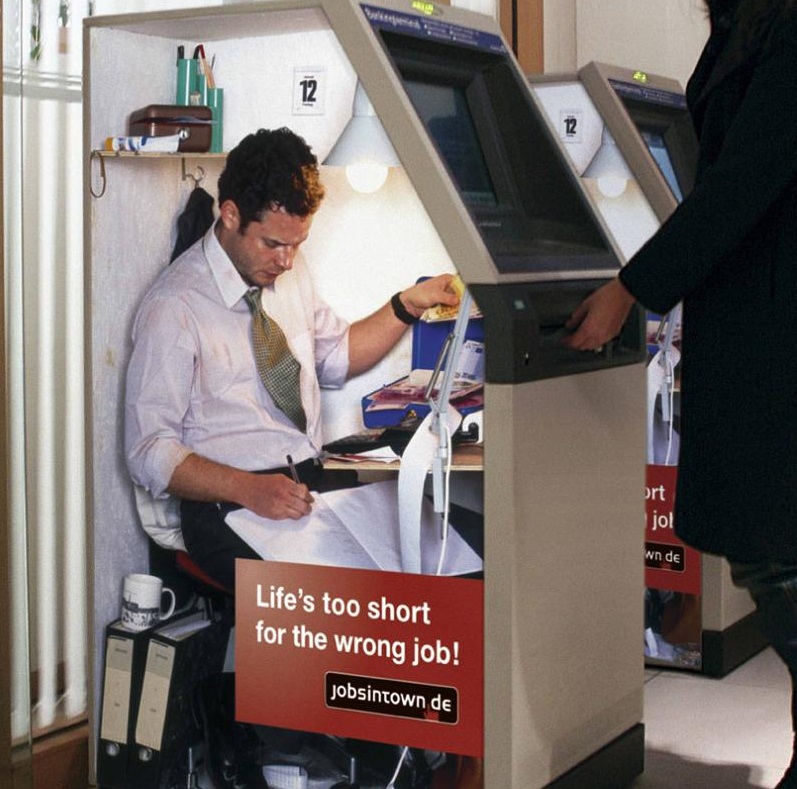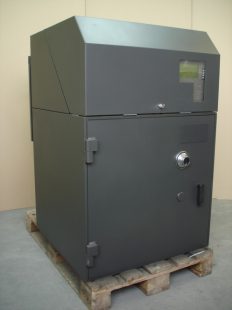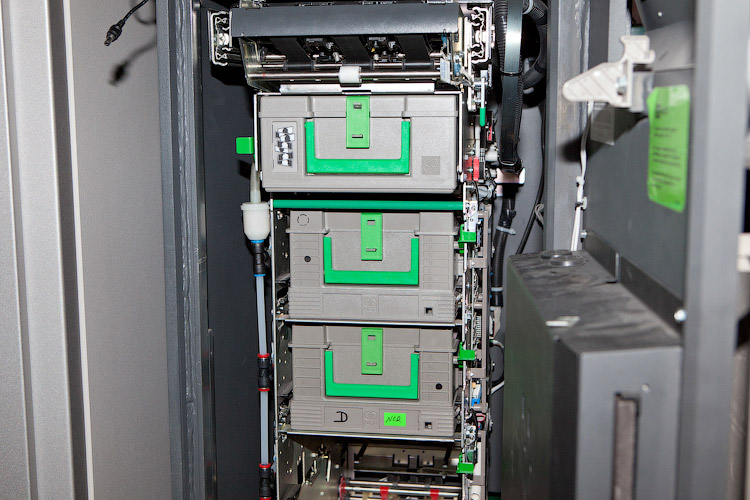Every bank card holder has come across an ATM at least once in his life. For us, an ATM is a multifunctional device that allows us to realize almost all the capabilities of the card. But it was not always so. At the dawn of its development, ATMs, or, in scientific terms, ATM (Automated Teller Machine), were intended only for receiving cash.
The first ATMs appeared in 1967. Then, to receive money, they did not need cards that are usual today, but special checks issued by banks to their customers. Five years later, in 1972, ATMs that work with plastic cards appeared. The development of hardware and software made it possible over time to transform these devices from simple "automated machines for issuing money" into powerful complexes that can replace an entire bank office.
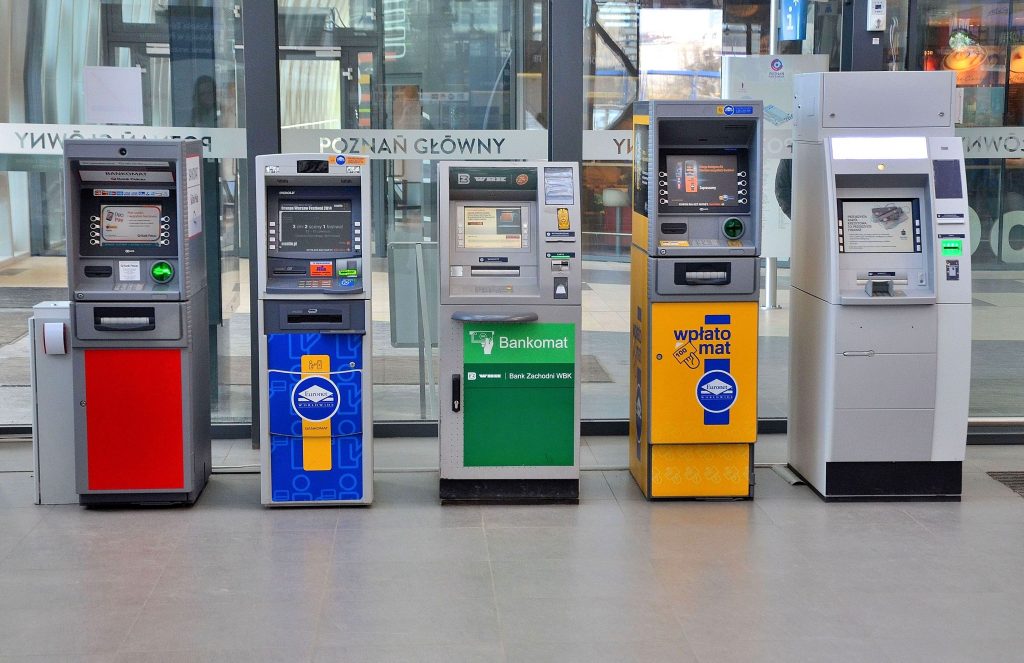
Contents of the article
What are they?
There are quite a few ATM companies. NCR, Diebold, WinCor, Nautilus ... Each of these companies has its own vision of how ATM should look and work. In general, all ATMs can be divided into three large groups:
Is there tetris?
An ATM, in fact, in software terms is an ordinary computer with peripheral devices connected to it:
Previously, ATMs were installed as the base operating system OS / 2. But with the arrival of the Windows family, there was a migration to these operating systems. At the same time, I have come across several variants of systems: from Windows NT to Windows 7. Currently, the most widespread system is Windows XP.
Of course, a lot of specific software is installed on the ATM: drivers for peripheral devices, specialized banking software, etc. Due to the large number of different processing centers, there are quite a few varieties of such software. But their tasks are the same:
What's inside?
Regardless of the category to which the ATM belongs, physically it can be divided into two halves: the upper (technical) part and the safe. The technical block must contain:

Optional components include:

The main and, often, the only component (in classic ATMs) located there is a dispenser... Its main task is the collection of banknotes and the preparation of the bundle for delivery to the client. Money is stored in special cassettes, the denominations of which are clearly defined. The dispenser holds from 4 to 6 cassettes with cash and one so-called reject cassette intended for rejected banknotes. The capacity of the cassette is from 2,000 to 2,500 thousand sheets, but the ATM will not be able to issue them all in one operation. This is due to a physical limitation: no more than 40 bills go to the presenter (the part of the dispenser through which the pack of cash goes to the client). And often it is limited by software to 30 or even less. It is because of this that it happens that, even with a large amount on the account, it is impossible to withdraw more than 40 or even 20 thousand rubles from the card.
Money can be taken from cassettes in two different ways: mechanical (Winkor, Diebold) or vacuum (NCR). In the first version, from the cassette, in which there is a large bundle of bills, the extreme one is folded with the help of rubber wheels. After that, this bill is fed into the tract, where
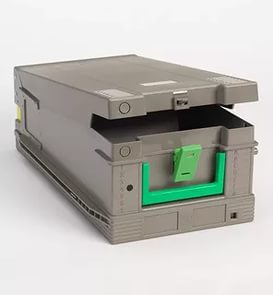
moves with belts into a special compartment. A pack is accumulated there for delivery to the client, that is, bills of various denominations in the required quantity (no more than 40 pieces in total). Then the shutter opens (a plug that protects the dispensing mechanism from various influences), and the money comes out of the safe. This is done using the same belts. If you fail to collect your cash within 30 seconds, the ATM will pull them back and drop the cassette into the reject.
The mechanism for feeding notes into the accumulation compartment is the same in both cases. The only difference between the second, vacuum method is that the bill is not folded out of the cassette, but is removed from there using suction cups.
It happens that in the process of moving notes, they get stuck on the belts, torn, jammed. Typically, this will result in a dispenser error and ATM stop. Quite often the safe turns into a cozy home for rodents, which leads to sad consequences, in the form of unfortunate animals, which are wound on belts.
The interaction of the system unit with the dispenser is carried out by means of a special electronics board, which is also hidden in the safe. It is she who communicates with all devices: keyboards, printers, dispensers. Directly the system unit communicates only with the network card, with the help of which the ATM and the processing center are connected.
Cash-in ATMs have a cash acceptance module next to the dispenser. Only two cassettes are already installed here, for receiving cash and a reject cassette. There can be two cassettes for rejected bills. Some cassettes have two compartments: for counterfeit and defective (torn, crumpled, etc.) banknotes and for “forgotten” banknotes. Above all this is a module that checks the authenticity of the banknotes. It looks like a narrow, one bill high, tunnel with a mass of sensors, each tuned to its own criterion for determining the authenticity. Therefore, it takes a lot of effort to deceive the ATM bill acceptor.

In addition to ATMs with a cash acceptance module, there are ATMs with a deposit module. They allow you to work not only with cash, but also with material values and documents. When making a transaction, the client is given an envelope where he puts what needs to be placed in a deposit box and places it in an ATM. The envelope states:
The period of ATM operation from collection to collection depends on how much it is in demand and can range from one day to several months. But usually it does not exceed two weeks. This is due to the fact that it is unprofitable for the bank to divert a lot of cash for bookmarking in cassettes, because the money must work. Cash collection is performed as the cassettes with cash are emptied or when the cassettes are filled to receive money.
Recycling ATMs have recently appeared. Just like Cash-in ATMs, they can work on receiving and dispensing cash. Unlike the first ones, which accept all bills in one cassette, without distinguishing their denomination, here there is a cassette for everyone. Cash deposited at the ATM by one customer is dispensed to the next.
Thanks to this mechanism, the operating cycle (time from collection to collection) can be several years. If any cassette is full, the ATM simply stops accepting bills of the corresponding denomination until there is more space in it. Of course, no bank allows the operating cycle to last for such an amount of time, but the frequency of collection of such devices is much less frequent than that of conventional ones.
Due to the peculiarities of the passage of bills in the path of such an ATM, they are checked for authenticity three times:
investor100.ru
The first ATMs appeared in 1967. Then, to receive money, they did not need cards that are usual today, but special checks issued by banks to their customers. Five years later, in 1972, ATMs that work with plastic cards appeared. The development of hardware and software made it possible over time to transform these devices from simple "automated machines for issuing money" into powerful complexes that can replace an entire bank office.

Contents of the article
- What are they?
- Is there tetris?
- What's inside?
What are they?
There are quite a few ATM companies. NCR, Diebold, WinCor, Nautilus ... Each of these companies has its own vision of how ATM should look and work. In general, all ATMs can be divided into three large groups:
- Classic ATMs. Devices designed for cash dispensing only.
- Cash-in ATMs. These devices allow not only issuing, but also accepting cash.
- Recycle ATM. The most modern devices only recently introduced to the market. They are a further development of Cash-in ATMs. Below we will look at their features in more detail.
Is there tetris?
An ATM, in fact, in software terms is an ordinary computer with peripheral devices connected to it:
- printer,
- monitor,
- keyboard
- etc.
Previously, ATMs were installed as the base operating system OS / 2. But with the arrival of the Windows family, there was a migration to these operating systems. At the same time, I have come across several variants of systems: from Windows NT to Windows 7. Currently, the most widespread system is Windows XP.
Of course, a lot of specific software is installed on the ATM: drivers for peripheral devices, specialized banking software, etc. Due to the large number of different processing centers, there are quite a few varieties of such software. But their tasks are the same:
- ensuring a stable connection with the bank's processing center;
- encryption;
- transfer of relevant information (card number, PIN block, type and amount of the transaction, etc.);
- processing responses.
What's inside?
Regardless of the category to which the ATM belongs, physically it can be divided into two halves: the upper (technical) part and the safe. The technical block must contain:

- monitor;
- receipt printer;
- PIN keyboard;
- card reader.
Optional components include:
- journal printer (in modern ATMs, the journal is kept in electronic form). Previously, using this printer, ATM operation logs were printed on a special tape for each operation.
- system unit. In fact, the system unit is always present in the ATM. But some manufacturers place it in the safe section. For example, this is what NCR used to do.
- screen keyboard. This component became optional when touchscreens became more popular.
- CCTV Cameras. Despite the stipulated regular places, an increasing number of banks give preference to external cameras. In general, this is a logical approach: for example, if an ATM is stolen, you can get a record of the incident.

The main and, often, the only component (in classic ATMs) located there is a dispenser... Its main task is the collection of banknotes and the preparation of the bundle for delivery to the client. Money is stored in special cassettes, the denominations of which are clearly defined. The dispenser holds from 4 to 6 cassettes with cash and one so-called reject cassette intended for rejected banknotes. The capacity of the cassette is from 2,000 to 2,500 thousand sheets, but the ATM will not be able to issue them all in one operation. This is due to a physical limitation: no more than 40 bills go to the presenter (the part of the dispenser through which the pack of cash goes to the client). And often it is limited by software to 30 or even less. It is because of this that it happens that, even with a large amount on the account, it is impossible to withdraw more than 40 or even 20 thousand rubles from the card.
Money can be taken from cassettes in two different ways: mechanical (Winkor, Diebold) or vacuum (NCR). In the first version, from the cassette, in which there is a large bundle of bills, the extreme one is folded with the help of rubber wheels. After that, this bill is fed into the tract, where

moves with belts into a special compartment. A pack is accumulated there for delivery to the client, that is, bills of various denominations in the required quantity (no more than 40 pieces in total). Then the shutter opens (a plug that protects the dispensing mechanism from various influences), and the money comes out of the safe. This is done using the same belts. If you fail to collect your cash within 30 seconds, the ATM will pull them back and drop the cassette into the reject.
The mechanism for feeding notes into the accumulation compartment is the same in both cases. The only difference between the second, vacuum method is that the bill is not folded out of the cassette, but is removed from there using suction cups.
It happens that in the process of moving notes, they get stuck on the belts, torn, jammed. Typically, this will result in a dispenser error and ATM stop. Quite often the safe turns into a cozy home for rodents, which leads to sad consequences, in the form of unfortunate animals, which are wound on belts.
The interaction of the system unit with the dispenser is carried out by means of a special electronics board, which is also hidden in the safe. It is she who communicates with all devices: keyboards, printers, dispensers. Directly the system unit communicates only with the network card, with the help of which the ATM and the processing center are connected.
Cash-in ATMs have a cash acceptance module next to the dispenser. Only two cassettes are already installed here, for receiving cash and a reject cassette. There can be two cassettes for rejected bills. Some cassettes have two compartments: for counterfeit and defective (torn, crumpled, etc.) banknotes and for “forgotten” banknotes. Above all this is a module that checks the authenticity of the banknotes. It looks like a narrow, one bill high, tunnel with a mass of sensors, each tuned to its own criterion for determining the authenticity. Therefore, it takes a lot of effort to deceive the ATM bill acceptor.

In addition to ATMs with a cash acceptance module, there are ATMs with a deposit module. They allow you to work not only with cash, but also with material values and documents. When making a transaction, the client is given an envelope where he puts what needs to be placed in a deposit box and places it in an ATM. The envelope states:
- date;
- time;
- Card number
- other information that allows you to accurately identify the client.
The period of ATM operation from collection to collection depends on how much it is in demand and can range from one day to several months. But usually it does not exceed two weeks. This is due to the fact that it is unprofitable for the bank to divert a lot of cash for bookmarking in cassettes, because the money must work. Cash collection is performed as the cassettes with cash are emptied or when the cassettes are filled to receive money.
Recycling ATMs have recently appeared. Just like Cash-in ATMs, they can work on receiving and dispensing cash. Unlike the first ones, which accept all bills in one cassette, without distinguishing their denomination, here there is a cassette for everyone. Cash deposited at the ATM by one customer is dispensed to the next.
Thanks to this mechanism, the operating cycle (time from collection to collection) can be several years. If any cassette is full, the ATM simply stops accepting bills of the corresponding denomination until there is more space in it. Of course, no bank allows the operating cycle to last for such an amount of time, but the frequency of collection of such devices is much less frequent than that of conventional ones.
Due to the peculiarities of the passage of bills in the path of such an ATM, they are checked for authenticity three times:
- the first time - when you just insert bills into the bill acceptor;
- the second - when you confirm the operation, and your money is sent to the appropriate cassettes;
- the third is when someone withdraws cash and it goes outside.
investor100.ru

